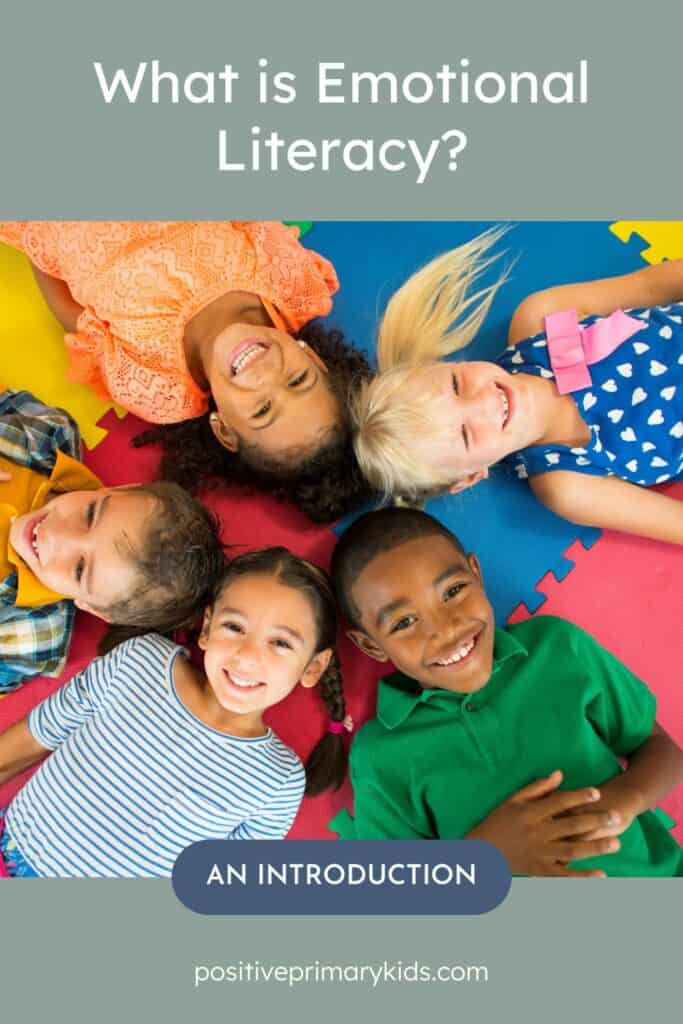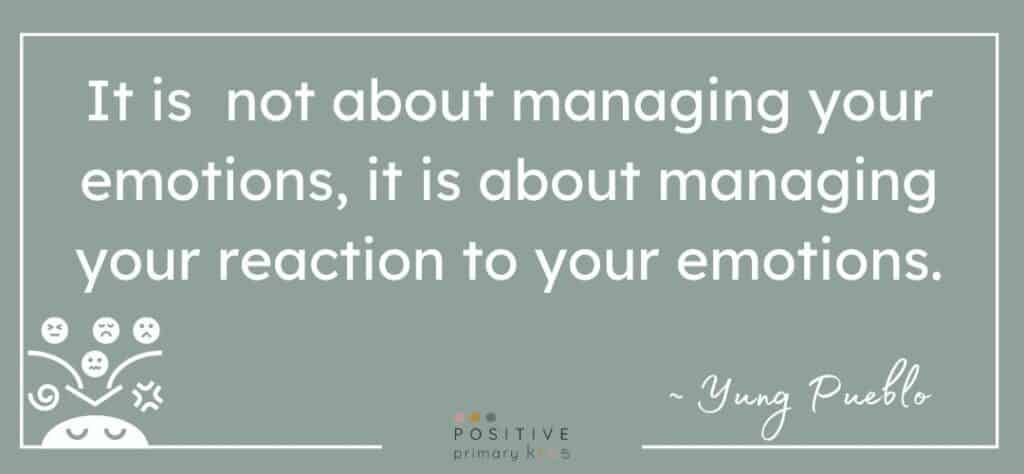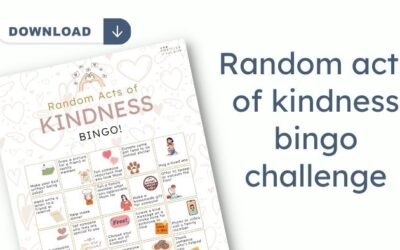How well does your child recognise how they are feeling? Can they express their emotions to you? Are they able to recognise how other people are feeling when they express emotional responses?
These skills all depend on emotional literacy ability, which needs to be nurtured from a young age.
By the end of this article, you will understand what emotional literacy is and how important it is for children to develop.
This is the first post in a series devoted to emotional literacy.
Affiliate Disclosure: This post may contain affiliate links. This means that I may receive a small commision – at no cost to you – if you make a purchase through these links. Thank you for your support!
What is the meaning of emotional literacy?
‘Emotional literacy’ is a term that was first used extensively by psychotherapist Claude Steiner in 1997 in his book, ‘Achieving Emotional Literacy.’
If we think about the word ‘literacy’, its meaning is ‘the ability to read and write.’ It can also mean ‘knowledge or competence in a specific area’, such as having computer literacy.
Emotional literacy is the ability to easily recognise and name your emotions as they happen and understand, manage and express them appropriately. It also involves the ability to recognise the feelings that others express, to understand why they feel that way and to choose an appropriate response.
Just as we can learn to read and write, we can also learn to recognise and fully understand our emotions and why we feel them. The ability to do this is emotional literacy.
What is an example of emotional literacy?
A good way to understand emotional literacy is through a scenario. In this example, both Lilly and Hannah experience the same situation but deal with their feelings about it very differently…
Lilly forgets to do her homework one week and has to stay in at playtime to do it. She feels angry about not being allowed out to play. She recognises that she is feeling angry and manages her emotions by reflecting on the situation before reacting. When the class are given new homework that afternoon she writes the task down to help her remember. That week she makes a really good effort with her homework and puts it in her bag the night before it’s due so that she won’t forget it. Her teacher is impressed with the work she hands in and she feels good about herself. Lilly’s self-esteem is boosted and she is motivated to continue to stay organised and complete her homework in the future.
Hannah also forgets to do her homework one week and has to miss playtime. She feels angry about this too and yells at her teacher that it isn’t fair before storming out of the classroom and slamming the door and heading outside. When playtime ends, Hannah spends the rest of the school day shut down and withdrawn, not really participating in the lessons.
Lilly has demonstrated emotional literacy by recognising her anger and reflecting on why she feels this way. She demonstrates self-control and manages her feelings by thinking about the situation and choosing to take appropriate steps rather than reacting at that moment.
Hannah needs help to develop her emotional literacy because she acted impulsively. She wasn’t able to resist the instant gratification of reacting negatively to her anger with an explosive outburst.

Why is emotional literacy important for kids?
We all experience a range of emotions every day. Many children (and often adults too) struggle to understand their feelings which makes it very difficult to articulate them or express them in an appropriate way.
It’s important to acknowledge that we are not going to be happy and joyous during every moment of our lives. That’s totally unrealistic. But learning how to identify and accept our emotions as they happen and react to them intelligently is one of the most important skills we can have.
Supporting the development of children’s emotional literacy is the key to shaping emotionally, mentally and physically healthy and happy lives.
Being emotionally literate allows kids to:
- Notice their feelings and understand why they are experiencing them
- Express their emotions in a way that is appropriate and useful
- Observe emotions that others are experiencing and respond with empathy and respect
- Have positive social interactions with peers and the wider society
- Form meaningful relationsips
- Build self-esteem, patience, resilience and self-motivation
- Develop their communication, observation and listening skills
How do we teach emotional literacy?
Beginning to intentionally teach children about emotions can be as simple as using pictures of a character in a book or on TV and asking: How are they feeling? Why are they feeling that way? What clues are there?
I know I just said that emotional literacy can be simple to teach, but it isn’t something that you can rush! For emotional learning to be effective it needs to be age-appropriate, meaningful and relatable to the child.
At home, one of the best ways to develop your child’s emotional literacy ability is to model it. If you experience an emotional response and your child asks you what’s wrong, explain how you are feeling using language that they will understand. When your child experiences a strong emotions or inappropriate response, ask them if they can explain how they are feeling to you. Demonstrate the empathy and listening skills that you want to develop in them.
Final thoughts
Knowing how to do what is best for children’s emotional health is a common worry for parents. Of course you want your child to develop self awareness, meaningful relationships and have a great quality of life. Understanding how to develop your child’s emotional literacy in your child is a great way to guide them along a positive, emotionally healthy path through life.
But where do you start with intentionally nurturing their emotional literacy? A great place to start is by reflecting on your own emotions. For the next week, try ‘checking in’ with yourself several times a day and see if you can identify what emotional you are experiencing.
Coming next in this series, we’ll dive into the vocabulary of emotions to help children communicate about their feelings.
What do you need help with on this topic?
Do you have any questions about emotional literacy or specific resources that you’d like me to write about or create?
Let me know in the comments below!








0 Comments